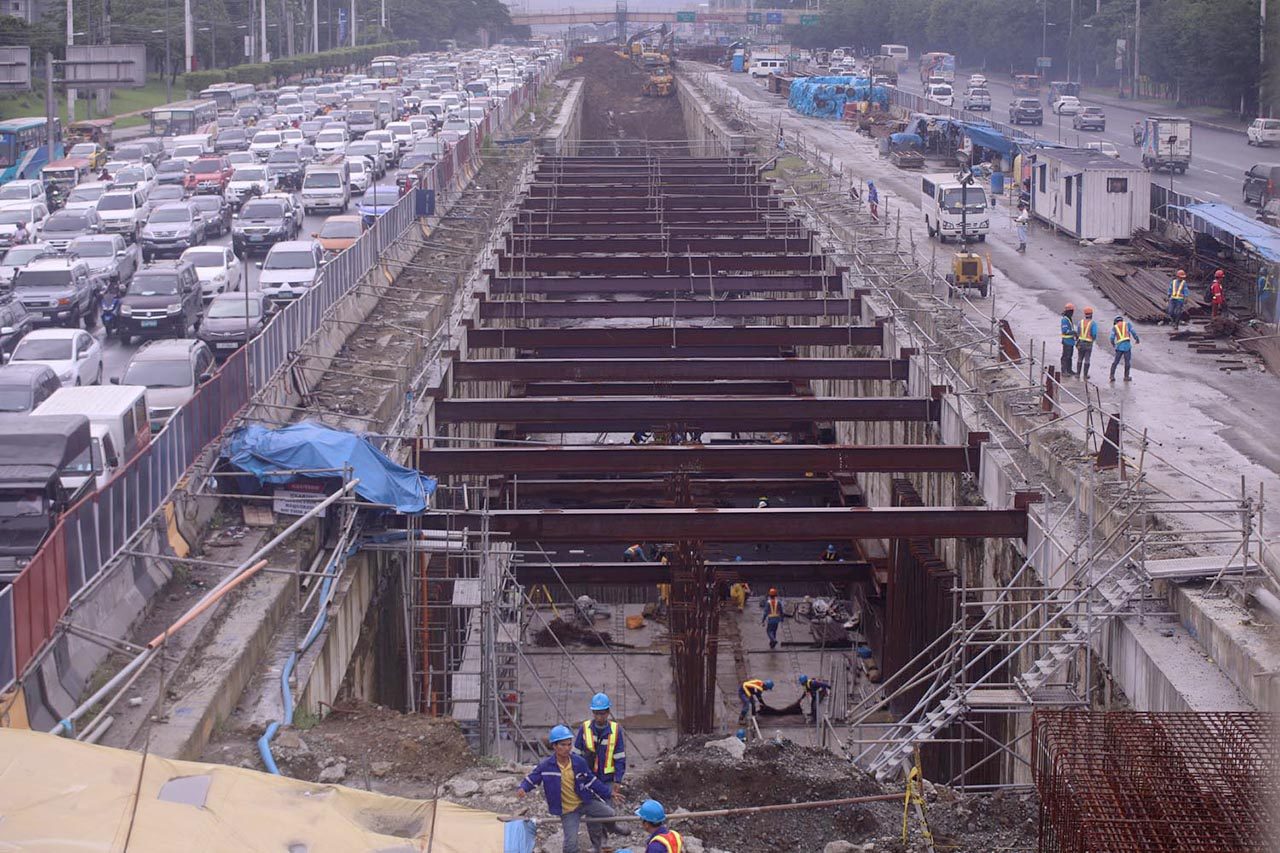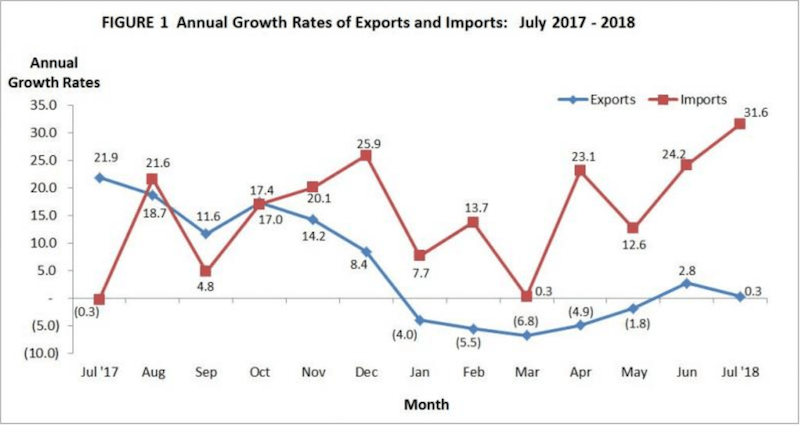SUMMARY
This is AI generated summarization, which may have errors. For context, always refer to the full article.

MANILA, Philippines – The country’s trade deficit widened by 171.7% to $3.55 billion in July 2018, said the Philippine Statistics Authority on Tuesday, September 11.
The figure was a huge leap from the $1.31 billion recorded in the same period last year.
Imports accelerated by 32%, the fastest rate since June 2016. Exports languished and grew only by a mere 0.3%.
Total trade grew by 17.5% or at $15.2 billion.

A trade gap occurs when a country absorbs more imports than what it exports.
In economic theory, persistent trade deficits have negative effects on employment and economic growth. Wide trade gaps also push down the value of the Philippine peso. (READ: Philippine peso weakens further to 13-year low)
“The trade deficit in July of $3.55 billion was the third worst trade deficit on record and also the third worst trade deficit during this administration. The worst trade deficit of $3.97 billion was posted in December 2017 while the second worst was in May 2018,” said think tank ING.
The Philippine Exporters Confederation (Philexport) attributed the trade gap to the government’s infrastructure push.
“The trade deficit is really being driven by Build, Build, Build due to heavy imports of construction materials,” said Philexport president Sergio Ortiz-Luis.
The double-digit jump in imports was driven mostly by iron and steel shipments (135.5%).
Turbulence ahead
The National Economic and Development Authority (NEDA) warned of more challenges in trade in the coming quarter.
“The World Trade Outlook Indicator points toward a continued slowdown in trade in the 3rd quarter. The slowdown in activity is attributed to rising trade barriers, moderating growth in China, higher energy prices, and elevated policy uncertainty,” said Socioeconomic Planning Secretary Ernesto Pernia, the director-general of NEDA.
Pernia also said the trade war between the United States and China has “resulted in a growing coverage of tariff levies throughout the year, with both countries already imposing additional 25% tariff on $50 billion worth of goods each.”
“Trade war fears have weighed on business sentiment, and we now see softer global activity. With a resolution unlikely in the short term, the dispute is expected to dampen growth in both economies and drag down growth in the wider global economy,” he added.
To boost exports, Pernia said there is a need to support marketing services for farmers, fishermen, and micro, small, and medium enterprises, as well as link exporters to sources of export financing.
He added that the high costs of domestic and international shipping plus cargo handling also need to be addressed.
“Addressing costs of trade will ensure that imported goods, especially capital and intermediate products, are less expensive and are efficiently utilized in the country’s Build, Build, Build program,” he said.
Pernia further noted that the government needs to further ensure strong domestic growth amid threats of “deterioration in the global economic environment.” – Rappler.com
Add a comment
How does this make you feel?
There are no comments yet. Add your comment to start the conversation.